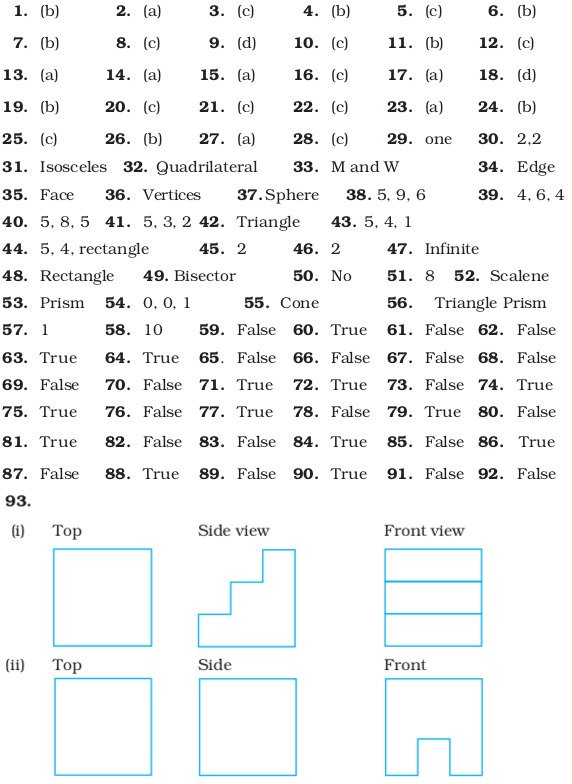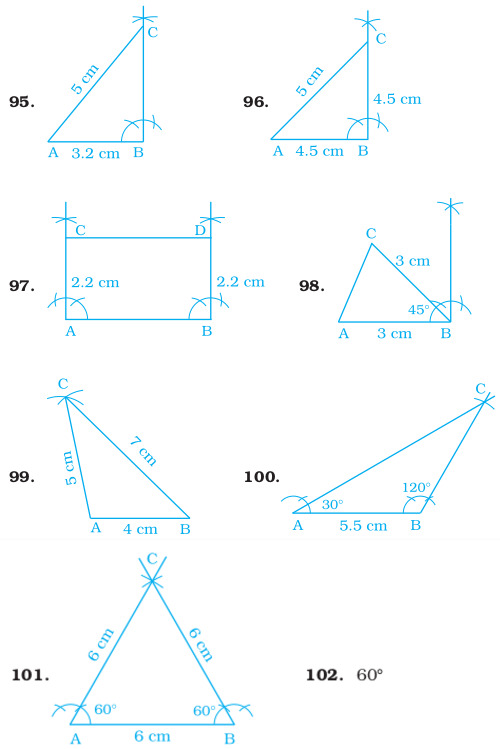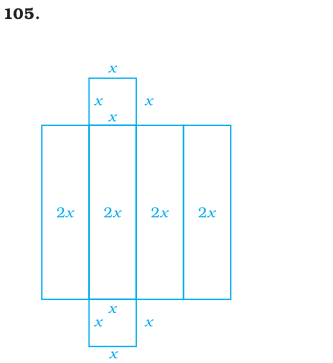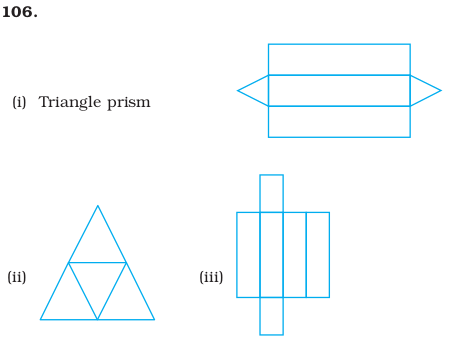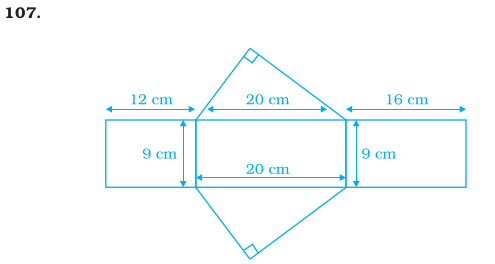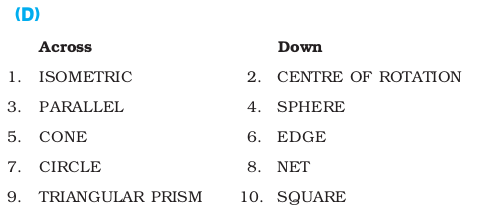NCERT Exemplar Class 7 Maths Chapter 12: Practical Geometry Symmetry & Visualising Solid Shapes. NCERT Exemplar Solutions for Class 7 Maths Chapter 12 Practical Geometry Symmetry & Visualising Solid Shapes prepare students for their Class 7 exams thoroughly.
Maths problems and solutions for the Class 7 pdf are provided here which are similar to the questions being asked in the previous year’s board.
Contents
NCERT Exemplar Class 7 Maths Chapter 12: Practical Geometry Symmetry & Visualising Solid Shapes
Class 7: Maths Chapter 12 solutions. Complete Class 7 Maths Chapter 12 Notes.
Main Concepts and Results
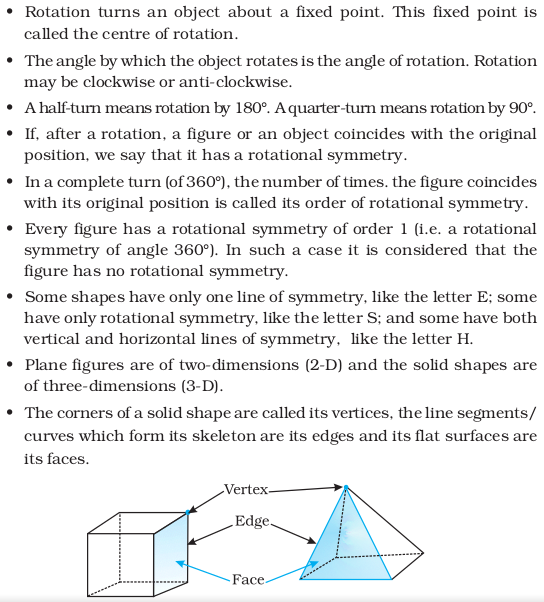
Let a line ‘l’ and a point P not lying on it be given. By using properties of a transversal and parallel lines, a line which passes through the point P and parallel to ‘l’, can be drawn.
A triangle can be drawn if any one of the following sets of measurements are given :
(i) Three sides (SSS).
(ii) Two sides and the angle between them (SAS).
(iii) Two angles and a side (AAS) or (ASA).
(iv) The hypotenuse and a leg in the case of a right-angled triangle (RHS).
A figure has line symmetry, if there is a line about which the figure may be folded so that the two parts of the figure will coincide with each other.
Regular polygons have equal sides and equal angles. They have multiple (i.e., more than one) lines of symmetry.
Each regular polygon has as many lines of symmetry as it has sides.
Mirror reflection leads to symmetry, under which the left-right orientation have to be taken care of.
A net is a skeleton-outline of a solid that can be folded to make the solid.
Solid shapes can be drawn on a flat surface. This is called a 2–D representation of a 3–D solid (shape).
Two types of sketches of a solid are possible:
(i) An oblique sketch which does not have proportional measurements.
(ii) An isometric sketch which is drawn on an isometric dot paper. In this sketch of the solid, the measurements are kept proportional.
Different sections of a solid can be viewed in many ways:
(i) By cutting or slicing, the shape, which would result in the cross- section of the solid.
(ii) By observing a 2-D shadow of a 3-D shape.
(iii) By looking at the shape from different positions-the front-view, the side-view and the top-view.
Solved Examples
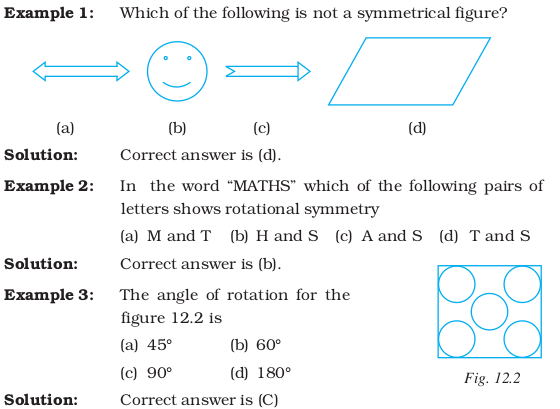





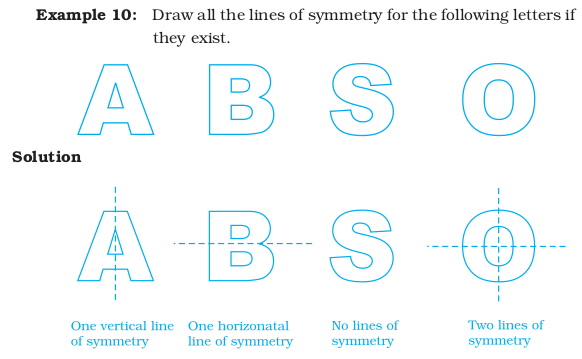
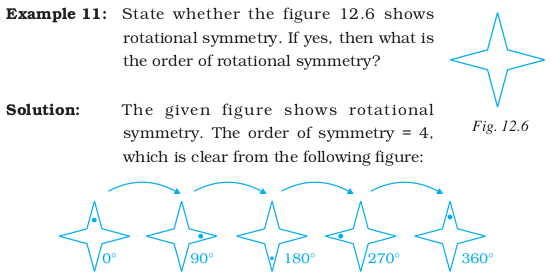

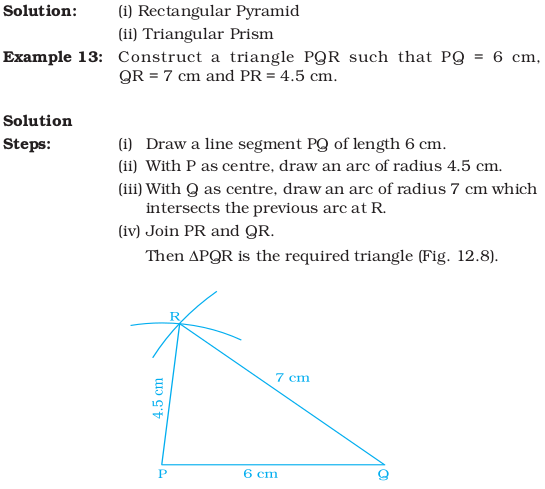
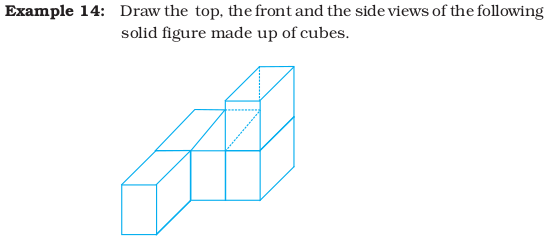

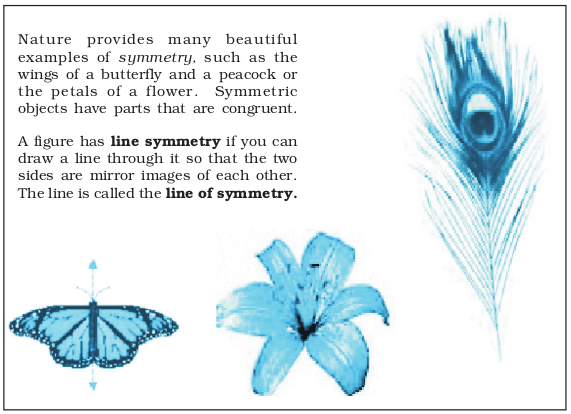

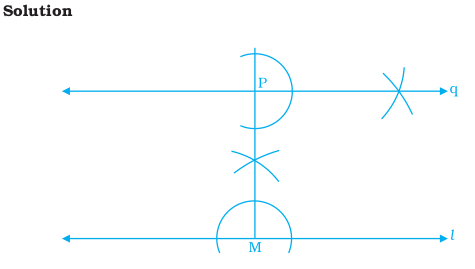
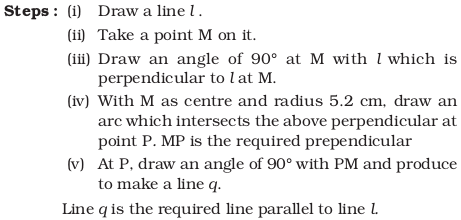




Multiple Choice Questions

Fill in the Blanks Type Questions
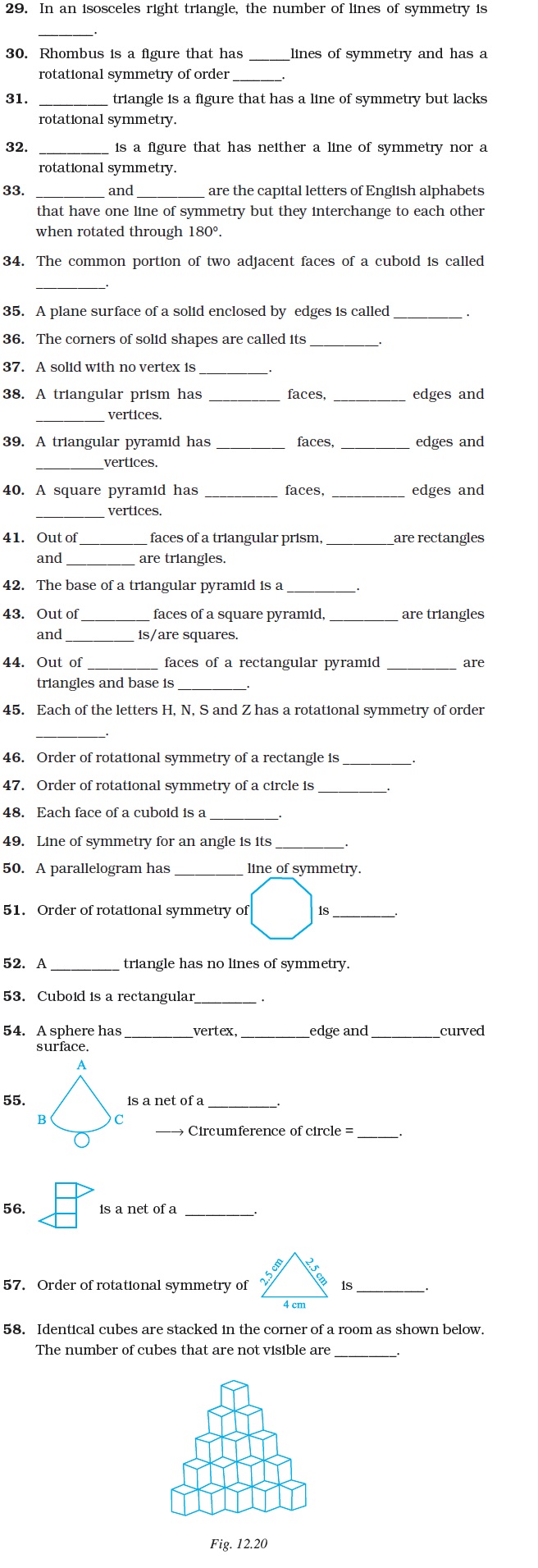
True False Type Questions
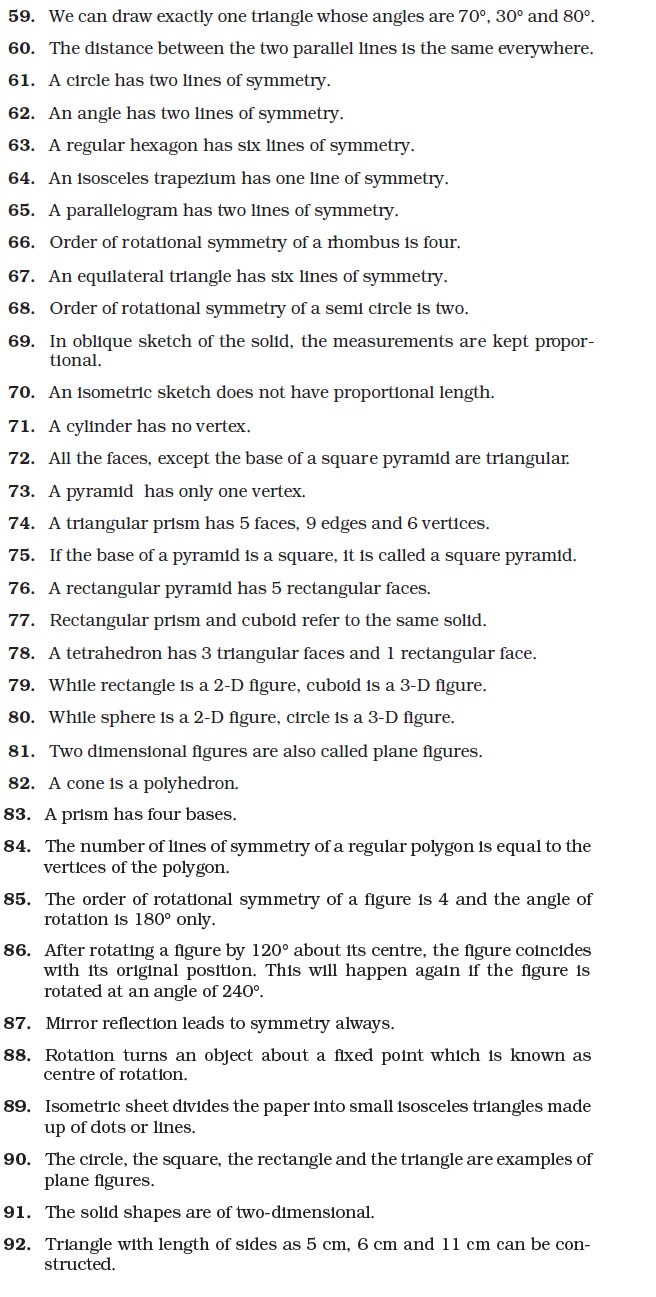
Other Important Type Questions

Application
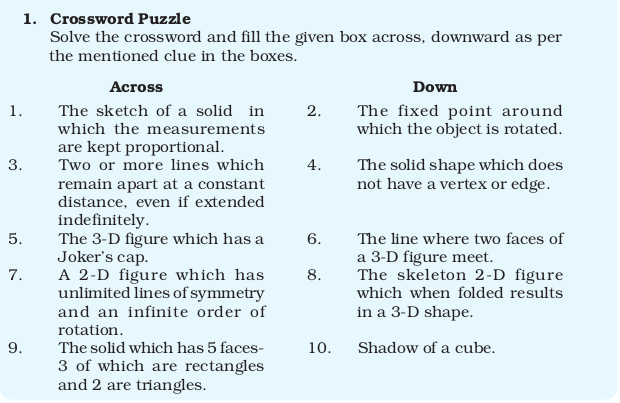

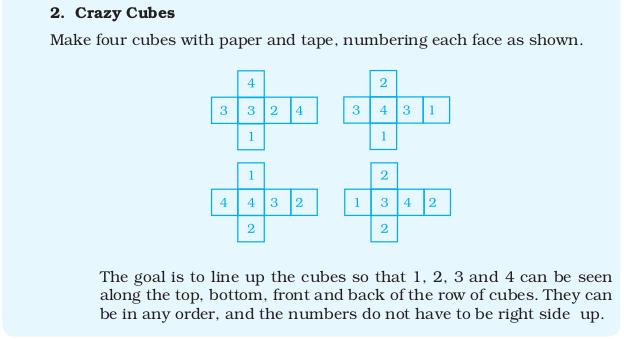
Click here to download NCERT Exemplar Class 7 Maths for Unit 12 Practical Geometry, Symmetry and Visualising Solid Shapes.
Answers
